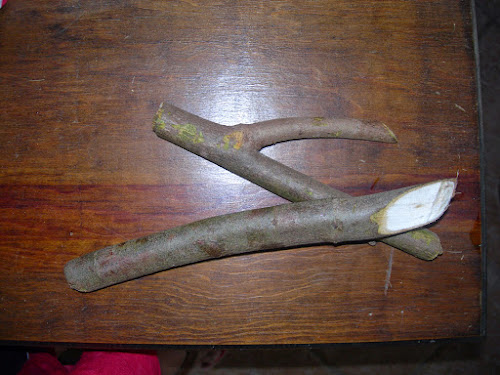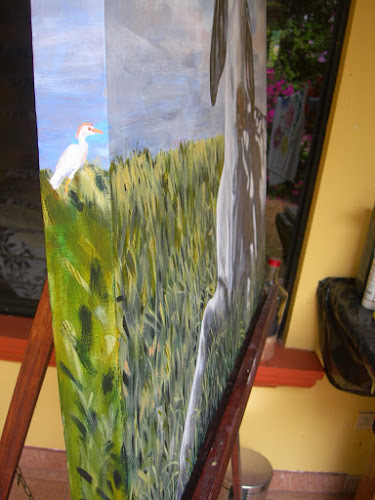When we arrived in Costa Rica, we had valid driver's licenses from British Columbia, Canada. To obtain Costa Rica licenses, all we had to do was present our unexpired foreign licenses and some papers (passports and verification that we had applied for residency status), pass low threshold medical and eye examinations, and pay the piper within 90 days from our date of arrival. Fortunately, we did so in a timely manner because the law changed a short time later.
Now, the rule seems to be that you must have residency status in Costa Rica before you can obtain a Costa Rica driver's license based upon a foreign driver's license. The problem is that it often can take upwards of a year or more to have a residency application approved. In the meantime, your foreign license will be recognized for only 90 days from your latest date of entry into Costa Rica as it appears stamped in your passport. So, for those caught by the new law and wanting to drive in Costa Rica, it may be necessary to periodically leave the country (to Nicaragua, Panama or wherever) and return the next day (or whenever) merely to get a new latest date of entry into Costa Rica – and then to be good for up to another 90 days. Or, you may choose to rely on the bus system and taxis.
Recently, the time came when our original Costa Rican drivers' licenses had to be renewed. In fact, they had expired but expiry has no effect on renewal. The only consequence is the obvious one – you cannot or you had better not drive. You certainly will not be able to rent a car as we do from time to time.
The first step in the renewal process was for each of us to obtain a medical exam and "dictamen médico digital" (digital medical opinion). For this, we went to Dra. F. Elena Arias (tel. no. 8336-6475) who has a private practice in Atenas – the town where we live.
The exams were little more than taking blood pressure, measuring height and weight and heart rate, and asking a few questions (any drugs, etc.?). We were in and out within a half hour. A good part of the doctor's time was spent entering our identities and exam results into a computer and transmitting the information to a database (SEDIMEC) which appears to be operated under the umbrella of the College of Physicians and Surgeons of Costa Rica ("Colegio de Médicos y Cirujanos de Costa Rica"). Although Dra. Arias said we probably would not need them, she provided us with printouts headed "Comprobante Dictamen Médico" (Medical Opinion Proof), each containing an important code number so that authorities down the road could easily locate our information on the database if any question arose.
Costa Rica law requires that we be enrolled in the public medicare system (CAJA) and we are. Whether we might have obtained "dictamenes médico digital" through CAJA, I do not know. But, I seriously doubt it. Nevertheless, not being inclined to address the issue, we turned to the private system. The total cost for the two of us was ₡30000 (about USD $60.00).
The next step should have been to go to the Banco de Costa Rica, pay for the license renewals (₡5000 or about USD $10.00 each), and get receipts confirming the payments. But, early one morning, we instead went directly to "COSEVI" - the agency in Costa Rica which handles the issuance of drivers' licenses and license renewals.
COSEVI is an acronym for "Consejo de Seguridad Vial" or roughly "Road Safety Council" in English. In addition to its headquarters in La Uruca, it has several regional offices throughout the country where renewals can be obtained. The locations of these offices can be found here or, with Google Translate from Spanish to English, here. We chose the COSEVI location in Alajuela which is identified on the maps below.
From where we live in Atenas, Alajuela is a comfortable ride by bus on highway 3 to the interurban bus station "1" shown on the right hand map. Depending on traffic, the trip takes about 45 to 60 minutes. From the bus station, it is a 10 minute ride by taxi to COSEVI. By car from Atenas on highway 3, one should exit right on Calle 24 in Alajuela.
When we stepped out from our taxi at COSEVI, we were approached by a friendly traffic guide wearing road safety clothing. He spoke some English and basically asked if he could help. He then guided us to a guard at the main entry gate to COSEVI only to be informed by the guard that the "jefe" (pronounced hef-eh or "head" or "boss" in English) would not be there that day. He was needed in order to properly process renewal applications that needed to be linked to a cedula and not a passport. "Come back tomorrow at 8:00 a.m." was the message. Both the guard and the traffic guide looked truly sorry, but that's the way it was. So back to Atenas we went.
We returned at 8:00 a.m. the next day and were met by the same traffic guide who took us over to the same guard. We were then were told that unfortunately the "jefe" would not be available until at least 9:30. Again, both the traffic guide and the guard looked sorry. The traffic guide then asked if we would like a coffee. When we said sure, he walked us across the street to a nondescript shop offering coffee and various bottled beverages and seemingly nothing more – but there was more as we subsequently discovered. We left the shop after about 45 minutes and then marked time in the shade at the side of the street for another 45 minutes. The traffic guide gave us chairs to sit on.
It was about 10:00 a.m. before we sat down in front of the "jefe". He wanted to see our existing licenses and cédulas (ID cards) and he wanted to know our current residence. For the latter purpose, we simply gave him a copy of the latest electric bill. Although we had them with us, he did not ask to see our Medical Opinion Proof – so he obviously had no difficulty getting the required medical information from the SEDIMEC database. He asked some questions including whether we agreed to be organ donors. He spent a lot of time at his computer typing and producing a lot of documents each of which required signatures and dating and some of which also required hand printed full names and cédula numbers. I think we each had 7 documents to deal with – more than required to get our original drivers' licenses.
When we were done with the "jefe", we were directed to another office to have our photographs taken. Here we encountered a minor embarrassment. The lady in charge wanted to see receipts confirming that we had paid the required license renewal fees. Well, we had not and we had to leave – nothing more could be done. We had immediate visions of having to taxi to a Banco de Costa Rica branch in downtown Alajuela, then back, just to pay the fees – and who knows how long it might take to get a teller in the bank. When we went outside, we asked the friendly traffic guide for directions. He smiled, pointed across the street, and walked us back to the nondescript shop where we had had coffee earlier in the day. He spoke to the proprietor who then stood at a computer terminal, did a bit typing, and produced two receipts. Total cost: ₡5500 colones each - ₡5000 for the license fee plus a ₡500 colone commission.
We were back at the photographer's office within 10 minutes of having left. In another 15 minutes or so we were done with renewed driver's licenses in hand and good for the next 5 years.
By the way, the friendly traffic guide never asked or hinted, but we did give him a gratuity for his time and assistance. He also has cars on hand that can be rented to take a driver's test and, if you don't have the required safety equipment in the trunk of your car, he can rent you those items too.








